The Issue
Good inventory planning is one of the most important functions of a retail business. Do it right and your profits explode...do it wrong and you can literally go out of business. For decades, smaller retailers have relied on inventory in + inventory out fueled by a lot of gut instinct and reactive decision making to move product along. It may have worked then, but given the erratic state of the economy, flash-in-the-pan trends that show up (and fizzle out) from out of nowhere and the promiscuous nature of customer loyalty, it’s far time to embrace a better path.
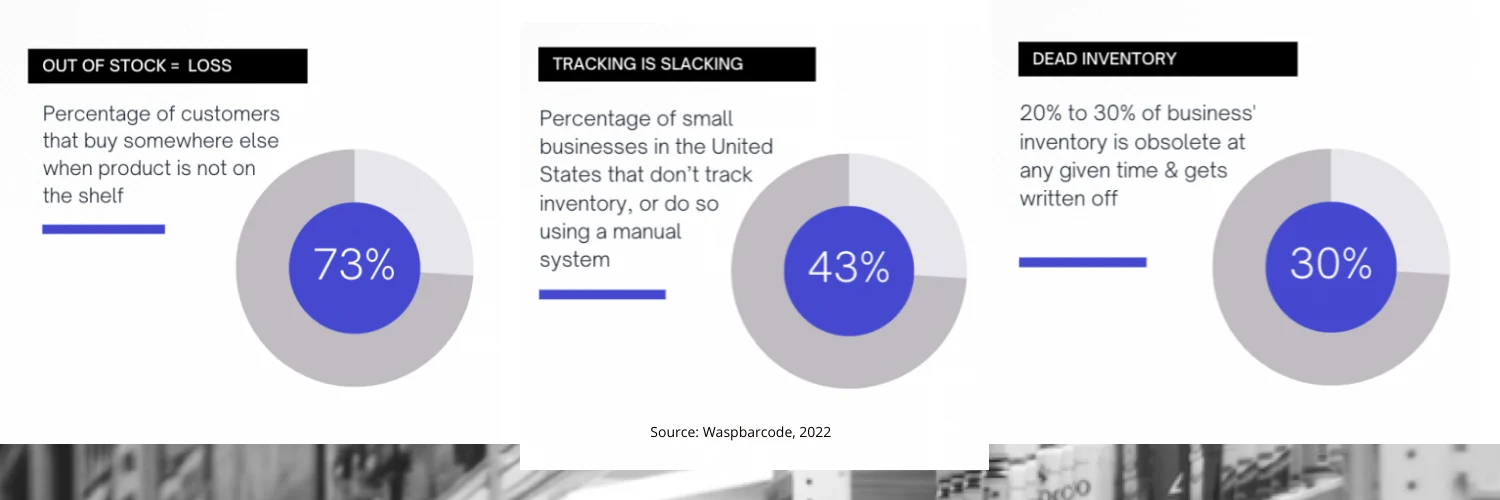
The Insights
There’s a difference between good retailing and great retailing. Anyone can stock shelves, make them pretty and be in business. To maximize your profit, however, you simply have to get strategic with your inventory strategy. There’s some great technology that can help, but like so many topics, technology is only the enabler—you first need to know what you’re looking for.
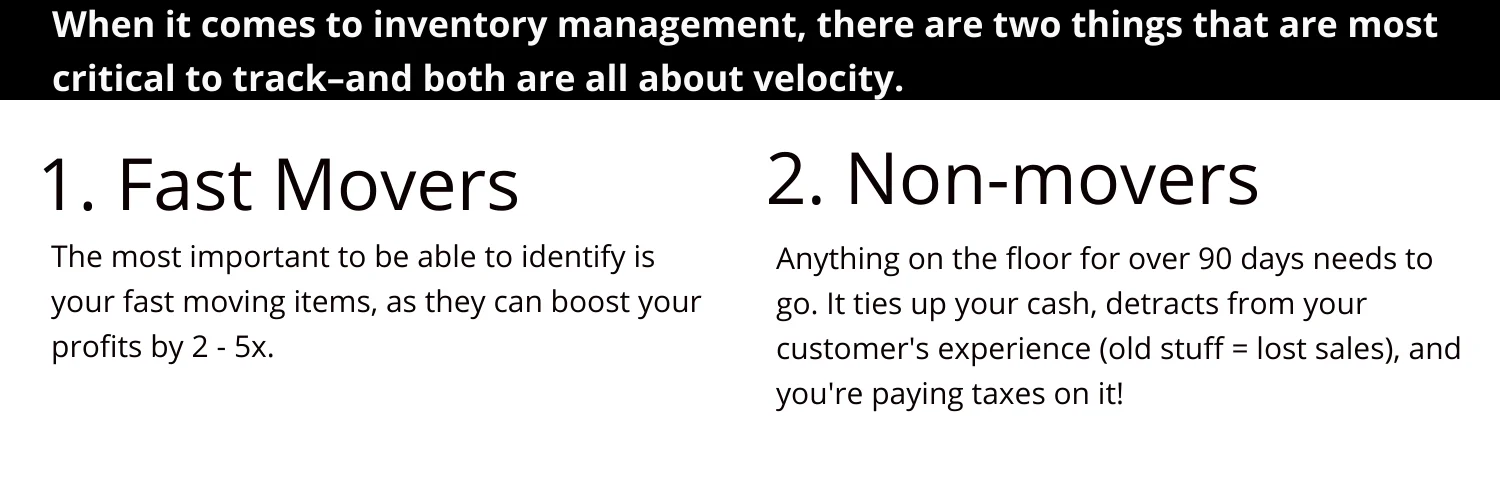
To identify what’s hot and what’s not–along with the velocity–for every SKU on the floor, you’ll need the following things.
1. An Integrated Platform
A feature-rich<, modern retail technology platform tied to a great POS system is key. If you have one that helps you with a real time view on exactly what’s happening with your inventory, you will be armed with the insights to turn merchandise faster and bring fresher goods in every month–the key to profits.
2. A Stock Ledger
The only way to know how you got where you are–and how to plan your next buy wisely–is to have a reliable, auditable stock ledger in place. Most retail systems only report against what you have, but a stock ledger shows when inventory has come in and when it left, therefore providing an accurate picture of your inventory at any point in time in history. Many POS systems don’t have this feature and it’s critical to your success. All Point can help steer you towards the ones that do.
3. An Open to Buy Plan
As explained by our friend and associate Dan Jablons, owner at Retail Smart Guys, an OTB plan is a purchasing budget for upcoming inventory orders that ensures that you can stock the right number of products at an ideal time by finding the difference between the amount needed and what’s available on hand. It helps you forecast your sales at a level that makes sense. It also keeps you from under stocking, which ticks off customers and causes them to buy elsewhere. It also helps you react quickly to fast-selling items and restock when necessary.
4. Consolidated Data
The right analytic platform can give you the business indicators that would otherwise take untold hours to collect manually. Once you have the data, you have actionable business intelligence that enables you to make quick decisions to positively affect your profits on both ends of the spectrum — throw gas on the fast movers and move the dogs quickly out of the doghouse.
5. Cash Margin
Cash margin is the net change, in cash, to your bank account. It’s basically what you’ve sold at retail minus what you received (or purchased) at cost. In a nutshell, we’re taking your sales of a product and subtracting what you paid the vendor for it. For example, if you bought 10 items for $5.00, you paid the vendor $50. If you have $75 in total sales of that item, your cash margin is $25.00. The reason this statistic is important is because it helps clarify where your business does and does not produce sufficient cash flow to pay the bills and still have money left over for profit.
6. Vendor Scorecard
Knowing how your vendor’s products are moving with a vendor scorecard gives you a true assessment of the relationship, but also leverage. If you know what you bought, the margin you hoped for, the margin you ultimately received and what stock you were ultimately left with, you can go back to them and say, “this is how I got hurt…what can you do for me?” Some will offer markdown money, free freight, or even a make good. Some do nothing…but now you know.
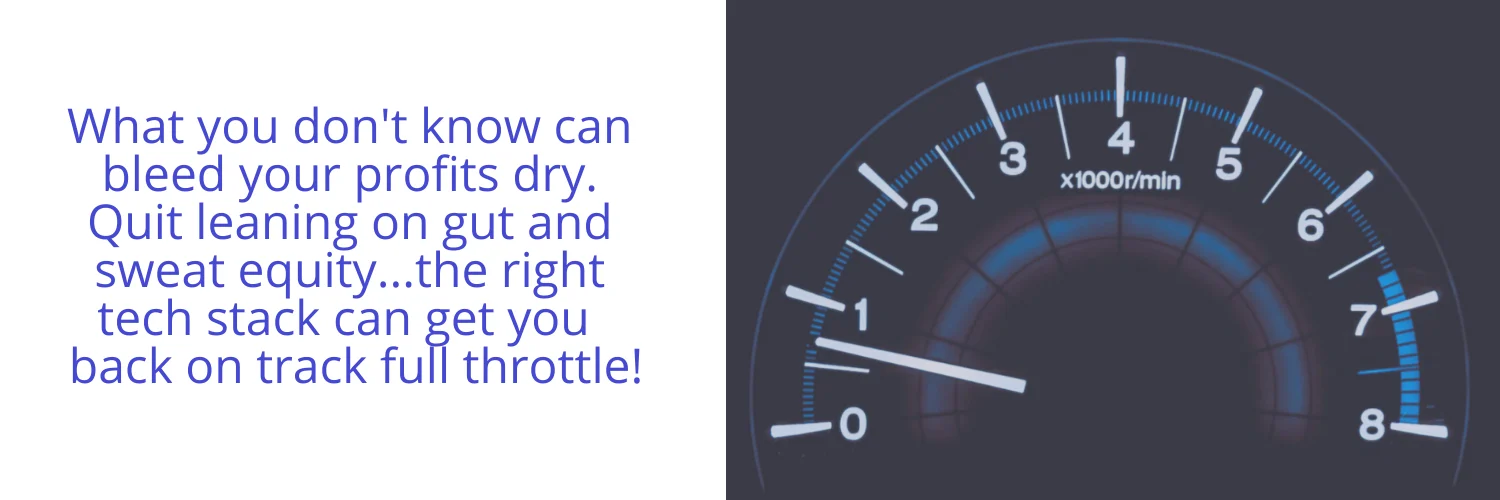
The Actions
Since there’s only so many hours in the day and so many warm bodies to go around, technology can be an ideal virtual wingman to help you plan your inventory strategy, but also know when to pivot proactively.
Buying too much inventory ties up cash that could be used for other more useful purposes. Inventory could spoil, get broken or stolen, or become obsolete. Buying too little means people come in looking for something and leave unhappy. Either way, we’ve learned that most inventory doesn’t move because of one of two reasons: pricing or placement.
If people are walking by a product and not buying, it’s likely pricing. If no one is walking by it, it’s placement. Having the right insights into both can help you make the right proactive choices, and not only can data-driven dashboards give you those insights, but we can help you build ‘triggers’ that will flag you when something is breaking your normal inventory turn patterns.
For slow moving items, there’s no one formula for everyone—it just depends on the category, product, and price point. Working with experts can help you fine tune your approach. At All Point, we sit down with our clients to understand their products and product mix to estimate a reasonable about of sales turn and age of inventory. We then specify the thresholds and use a platform to ‘program’ the markdown strategy, cadence and automated triggers. It’s all based on age of inventory and triggers for markdown 1, 2 and 3, etc.
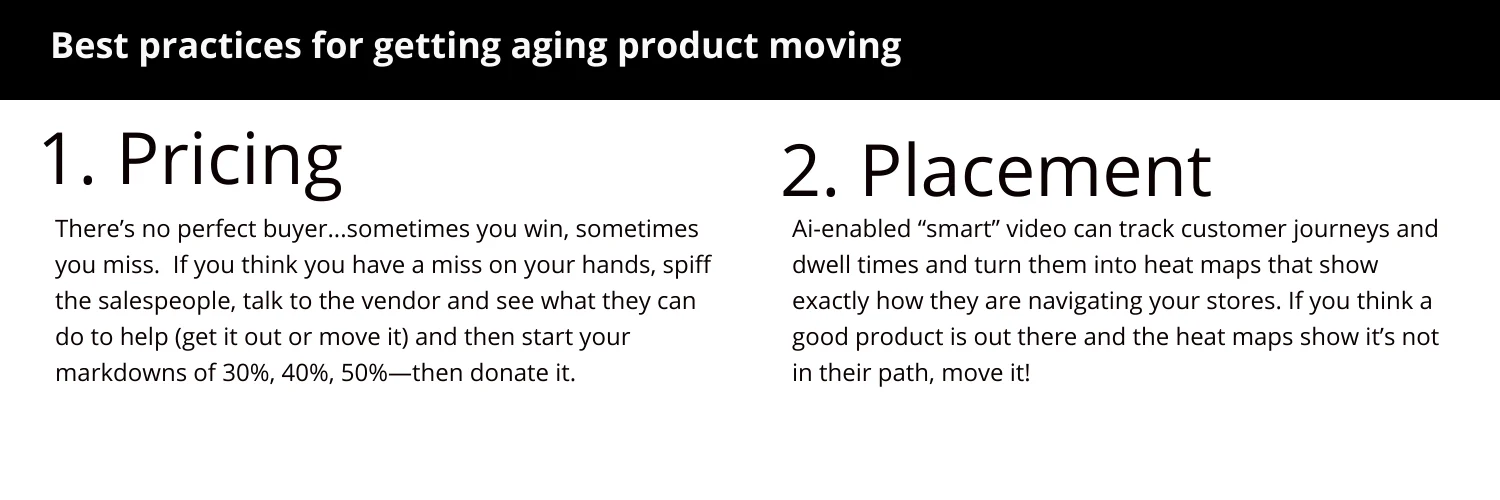
Tips From the Trenches
√ Work your vendors
Do you know your best vendor? Great. Now, how about your 3rd and 4th best? You should engage them too, as they will work HARD for you to get a leg up against the competition. Sometimes harder than anyone.
√ Get your inventory into the system STAT!
You may put off getting those POs in, but do so at your own peril. You simply can’t get a reliable, realistic snapshot of your retail business without it and if you wait to input them on receipt, it will shackle you. You won’t know what’s coming, your employees will have no ability to ‘tease out’ new stuff to customers and, by doing it in advance, staff can receive boxes and immediately get it product on the floor. If you’re stressed over the time to do this, there’s new and exciting options for outsourcing it at a crazy reasonable cost.
√ Ramp up your reporting
First, know what you want to know and how often you’ll need it. Then, figure out what you’re going to do with it once you have it. As one of our favorite retail consultants once quoted, data is like bikinis—it’s what’s hidden that matters most! It’s really true. When you have a forecast in place, a system for tracking against it and numbers that indicate something may be off, consider them cues to dig deeper to find out what’s really happening—and WHY!
√ Keep things moving
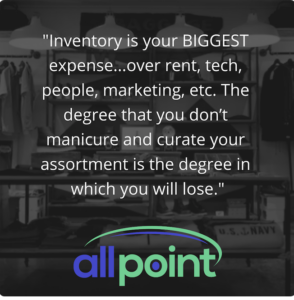
80% of what a store sells are goods that they received in the current month…so keep merchandise moving around on the floor to make the store feel fresh. Once it’s old, it’s likely not going anywhere.
√ Forecast correctly
If you want your OTB plan to be truly meaningful, you will want to forecast by department, by location and by month. And remember–your inventory should never have a birthday!
√ Know what you really need from your POS
Most people don’t do the homework on what they’re really going to need from their POS and it’s a huge mistake. Once you choose the solution, you’re stuck…so either engage an expert to help you or do the due diligence with other trusted retail store owners.
√ Consider an enhanced method for counting
RFID has come a long way and the expense has come way down. For some owners, having all inventory management automated makes great sense.

Why Is This Worth Your Time?
“There is no better strategy for a retail store than having the right goods. Once someone walks in and walks out with empty hands, it will take 5x more marketing to get them back in.” Dan Jablons, Retail Smart Guys
No truer words. Knowledge is power, and you are literally leaving (unquantifiable) money on the table if you don’t get serious about your inventory planning. The phrase we hate hearing most is, “if I had only known” because it’s so preventable!
Not all buying is treated equally, and you need to tailor yours against the right timelines and velocity. You need to know your ‘dogs’ versus your ‘dog whistles’ so that you can buy more of what’s moving, less of what’s not and make more confident, profitable future decisions for your store.
Technology designed, integrated, used and monitored properly is the key to quick identification and faster action for maximizing your inventory planning. By building out the right reports, investing in the right systems and leaning on business triggers, you can make the most of your planing and buying with less staff, stress and sweat equity.
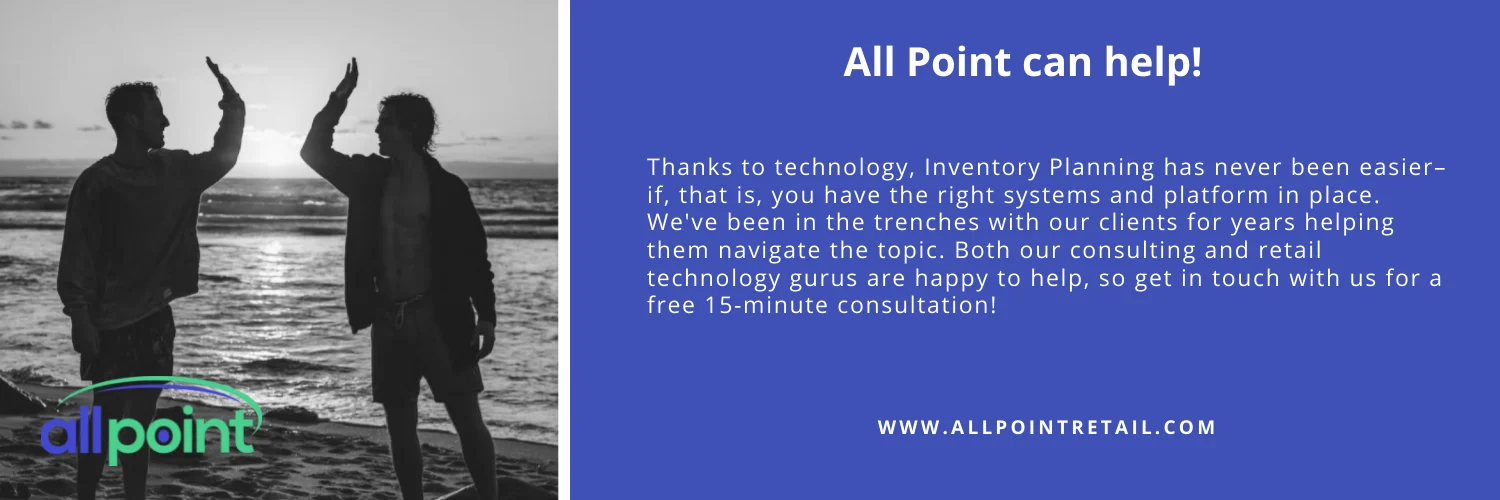
What you don't know can absolutely hurt you.
"*" indicates required fields
